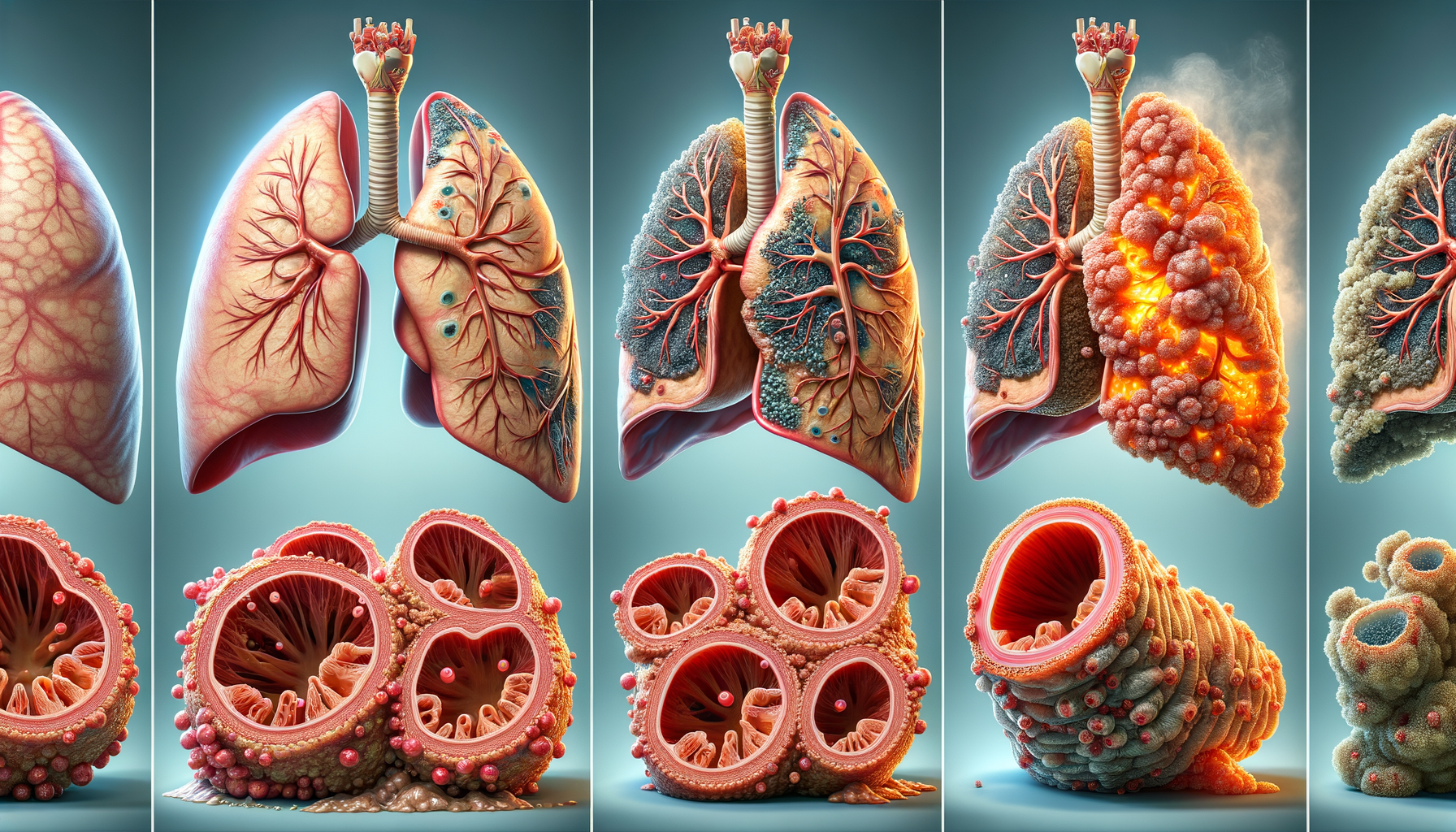Understanding COPD: A Progressive Journey
Chronic Obstructive Pulmonary Disease (COPD) is a progressive lung disease characterized by increasing breathlessness. It is mainly caused by long-term exposure to irritating gases or particulate matter, most often from cigarette smoke. Understanding the progression of COPD is crucial for effective management and treatment. The Global Initiative for Chronic Obstructive Lung Disease (GOLD) has classified COPD into four stages based on the severity of symptoms and lung function. Each stage requires specific management strategies to improve quality of life and slow disease progression.
Stage 1: Mild COPD
In the initial stage of COPD, symptoms are often mild and may not be noticeable. This stage is characterized by a slight limitation in airflow, with a forced expiratory volume in one second (FEV1) of about 80% or more of the predicted normal value. People may experience chronic cough and sputum production, but these symptoms are often attributed to a “smoker’s cough” or aging. Early diagnosis at this stage is rare, as individuals may not seek medical attention until symptoms worsen. However, recognizing and addressing symptoms early can significantly affect disease management. Lifestyle changes, such as smoking cessation and regular exercise, can help prevent progression to more severe stages.
Stage 2: Moderate COPD
Moderate COPD is when symptoms become more apparent and begin to interfere with daily activities. At this stage, the FEV1 falls between 50% and 79% of the predicted value. Individuals may experience increased breathlessness, especially during physical exertion, and more frequent respiratory infections. This stage is often when people first seek medical advice due to noticeable limitations in their ability to perform everyday tasks. Treatment typically involves bronchodilators to open airways and inhaled corticosteroids to reduce inflammation. Pulmonary rehabilitation programs can also be beneficial, focusing on exercise training, nutrition advice, and education to manage symptoms effectively.
Stage 3: Severe COPD
Severe COPD is marked by further decline in lung function, with an FEV1 between 30% and 49% of the predicted value. Symptoms become more persistent, and flare-ups or exacerbations occur more frequently, leading to hospitalizations. Daily life becomes increasingly challenging, as breathlessness and fatigue limit physical activities. At this stage, managing symptoms requires a comprehensive approach, including long-acting bronchodilators, inhaled steroids, and oxygen therapy for those with low blood oxygen levels. Staying up-to-date with vaccinations is crucial to prevent respiratory infections, which can exacerbate symptoms and accelerate disease progression.
Stage 4: Very Severe COPD
The final stage of COPD is characterized by severe airflow limitation, with an FEV1 of less than 30% of the predicted value. At this stage, quality of life is significantly impaired, and individuals may experience life-threatening exacerbations. Symptoms include extreme breathlessness, chronic cough, and frequent respiratory infections. Treatment focuses on managing symptoms and improving quality of life, often involving a combination of medications, oxygen therapy, and lifestyle adjustments. Palliative care may be considered to provide relief from symptoms and support for patients and their families. Despite the challenges, understanding and addressing the needs of individuals with very severe COPD can help improve their well-being and comfort.
Conclusion: Navigating the Stages of COPD
Understanding the four stages of COPD is essential for both patients and healthcare providers in managing this complex disease. Early detection and intervention can significantly impact the progression of COPD, enhancing the quality of life for those affected. Each stage presents unique challenges and requires tailored treatment strategies to address the specific needs of individuals. Through lifestyle changes, medication, and supportive therapies, individuals with COPD can manage their symptoms and maintain a better quality of life. Awareness and education about COPD are vital in helping individuals and their families navigate the journey of living with this chronic condition.




Leave a Reply